GLOSSARY
An A to Z of wine.
Contributors: Claire Adey & Moira TirthaB
Bretty Brett is short for brettanomyces. It’s a divisive yeast that can be seen as a blessing or a curse due to its tasting notes; washrind ripe cheese, barnyard
 hay or horse blanket. That distinct 'farmyness' is beloved by some and loathed by others. In smaller doses, it shows aromas of funk, leather and smoke and can actually lend a nice savoury point of interest.
hay or horse blanket. That distinct 'farmyness' is beloved by some and loathed by others. In smaller doses, it shows aromas of funk, leather and smoke and can actually lend a nice savoury point of interest. C
Carbonic Maceration, Semi-Carbonic Maceration When a wine is made using ‘cab mac’, it means that once grapes are picked, instead of being crushed and destemmed, whole bunches are all chucked in a sealed tank filled with CO2. This technique creates an oxygen free environment for the whole berries and starts a process called intracellular fermentation. Very wine nerd, we’re aware. The rest of the fermentation is carried out by ambient or added yeast. The result is fruity, often bubblegum
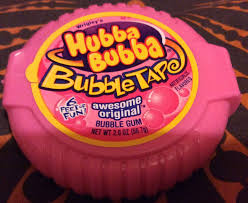 flavours, softer tannins and generally softer structure. A lot of those glou-glou, vin de soif, nouveau styles of wine will use carbonic. Semi-carbonic maceration is a similar vibe, it’s just that you’re not adding CO2 and instead, using the CO2 that naturally forms in the vat.
flavours, softer tannins and generally softer structure. A lot of those glou-glou, vin de soif, nouveau styles of wine will use carbonic. Semi-carbonic maceration is a similar vibe, it’s just that you’re not adding CO2 and instead, using the CO2 that naturally forms in the vat.Co-ferment This is when two or more grape varieties are fermented in the one vessel. This can be a mix of red and white grapes. Your chilled red might have some white grapes thrown in there to give it a mineral edge whilst retaining juiciness. It also tends to give wines a very sexy colour.
Corked Otherwise known as ‘Cork Taint’ is one of the reasons that the waiter at every restaurant gives you a splash of wine before they pour out a glass for everyone at the table. It won’t kill you but will ruin the aroma and taste of any wine. Cork taint in wine typically happens when a cork produces a compound called TCA (trichloroanisole). At a mild level, it’s a muting of fruit characteristics and it makes a wine taste ‘not quite right’. At its worst, the nose is wet dog, cardboard or newspaper (YUMMO) and it tastes slightly metallic-y, poolwater-y and faintly of.. well.. cork. Cork taint happens in a surprisingly high number of bottles (~3%) but it’s sometimes really hard to detect especially if you’ve not had the wine before. If a wine doesn’t taste like you think it would, ask your waiter or wine retailer about it.
Crunchy Generally wines with higher acidity and fresher fruit give a wine a ‘crunchy’ feel. Think about the difference in how your mouth feels after eating a green apple vs. a ripe banana
 .
.Cuvee Cuvee is a french word which means ‘juice’ and it is used to distinguish between different wines. The best way of thinking about this is by thinking about a single producer. All the different wines that a producer makes is a different cuvee. He might make three different chardonnays from three different sites, or that use a different amount of oak. They’ll all be a different cuvee.
D
Development A wine is ‘showing development’ when it starts showing characteristics of age. In red wines, fresh fruit character drops off and is replaced with dried fruit character, leatheriness, real mushroomy-earthy vibes. In white wines, you get a lot of nuttiness, honeyed fruit, kerosene. Traditional wine chat calls these characteristics ‘tertiary’. It comes up because corks and screw caps are designed to let in a little bit of oxygen into the wine over long periods of time and this reacts with wine to produce those characters. When a wine is ‘too far gone’, all the fruit is cooked and it’s all vegetal, spice, tar and barnyard notes.
Dry Not sweet. It’s all about sugar, or lack thereof. It’s important to note here that there’s a difference between sugar-sweetness and fruit-sweetness. Just because you mightn’t like sugar-sweet wines, you won’t necessarily dislike fruit-sweet wine.
F
Filtration Filtration is essentially putting wine through a sieve. It’s done to remove lees quickly and makes the final wine clear and adds to its stability. In natural wines, filtration is avoided because it takes something away from the wine.
Fining Over time, deposits and haze develops in a bottle of wine. Fining uses egg whites, gelatin, bentonite clay or other products to clump wine constituents together so that they can be removed. It helps soften the mouthfeel of reds and clears out excess tannins. It also adds clarity and stability in wines. If your wine has gone through fining, it’s unlikely to be vegan.
Flor Flor is a film of yeast that forms on the top of a wine in barrel when specific conditions are met. The booze in the barrel
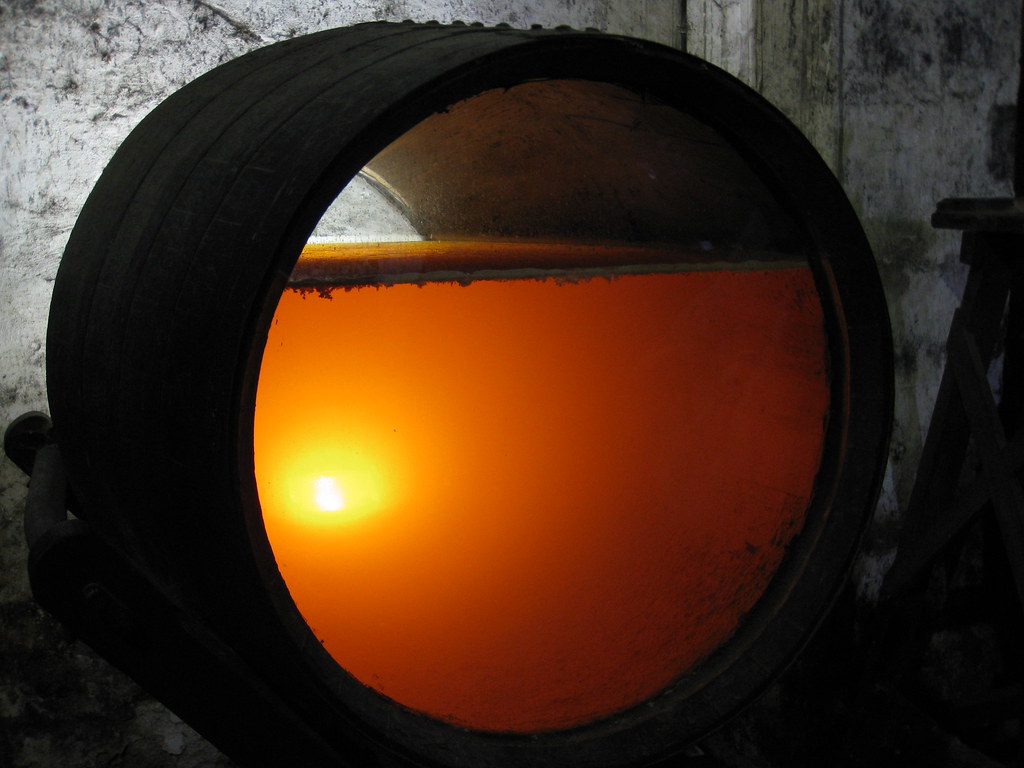 needs to be between 14.5% and 15.5% and is sensitive to humidity and temperature. It’s wine’s natural way of protecting itself from oxygen and imparts a salty, nutty character to wines. This is most common sherries and Vin Jaune.
needs to be between 14.5% and 15.5% and is sensitive to humidity and temperature. It’s wine’s natural way of protecting itself from oxygen and imparts a salty, nutty character to wines. This is most common sherries and Vin Jaune. Flabby When a wine lacks shape in your mouth and is missing balanced acidity; think about a meal that just falls flat when you taste it, because of a lack of cohesion of salt/fat/acid content meaning everything feels a bit meh.
L
Leesy When yeast has finished converting sugar to alcohol, it dies and kicks back in the bottom of the fermentation vessel as sediment. This sediment is called lees. Winemakers can rack wine (lol) to get rid of lees, but the lees can also be left there to give wines a distinctive richness and a softer mouthfeel. They impart flavours of nuts, honey and give wines that Bread Top milk bun sort of sweetness (pretty important in sparkling wines and sherries!). If a winemaker does “lees stirring” it means that they’re actively trying to get all the juice in contact with the lees and get more of deez nuts. Whether or not they’re stirred, lees are an important part of ageing wine and prevents exposure to oxygen.
Length The journey of the wine in your mouth. Sounds wanky, we know, but think of it like the wine’s ability to lurk in your mouth beyond that first sip.
M
Malo Malo is more cool wine slang for ‘malolactic fermentation’. There isn’t a not science-y way to explain this but it’s just when malic acid turns into lactic acid in the fermentation process. In wine, this looks like sharper acid (think green apples, and cut grass) into softer acid (think butter
 , cream, milk). This is what your mum means when she wants a buttery chardonnay. Wines can go through full malo (rich, big boiz), partial, or no malo (leaner, crisper hunnies). Pretty much all red wines go through malo whereas in white wines, it’s a stylistic choice.
, cream, milk). This is what your mum means when she wants a buttery chardonnay. Wines can go through full malo (rich, big boiz), partial, or no malo (leaner, crisper hunnies). Pretty much all red wines go through malo whereas in white wines, it’s a stylistic choice.Mousy
Mouse is what it sounds like. It’s wine that tastes like a mouse’s cage. It’s wee and soiled paper/ straw. Around 30% of people can’t taste mousiness because it involves the composition of your saliva (ew) but IYKYK. You won’t be able to smell it and it’s been proven to get worse with more air, so if you detect it early your glass - drink that shit quick!
N
Native, Wild, Spontaneous & Ambient Ferment If someone was to write a recipe for how to make wine, yeast is the second most important thing after grapes. You can buy packet yeast like the packet yeast you use for focaccia (S/O to Samin Nosrat) or you can use the yeasts that naturally form on the outside of your grapes in the vineyard like the sourdough starter
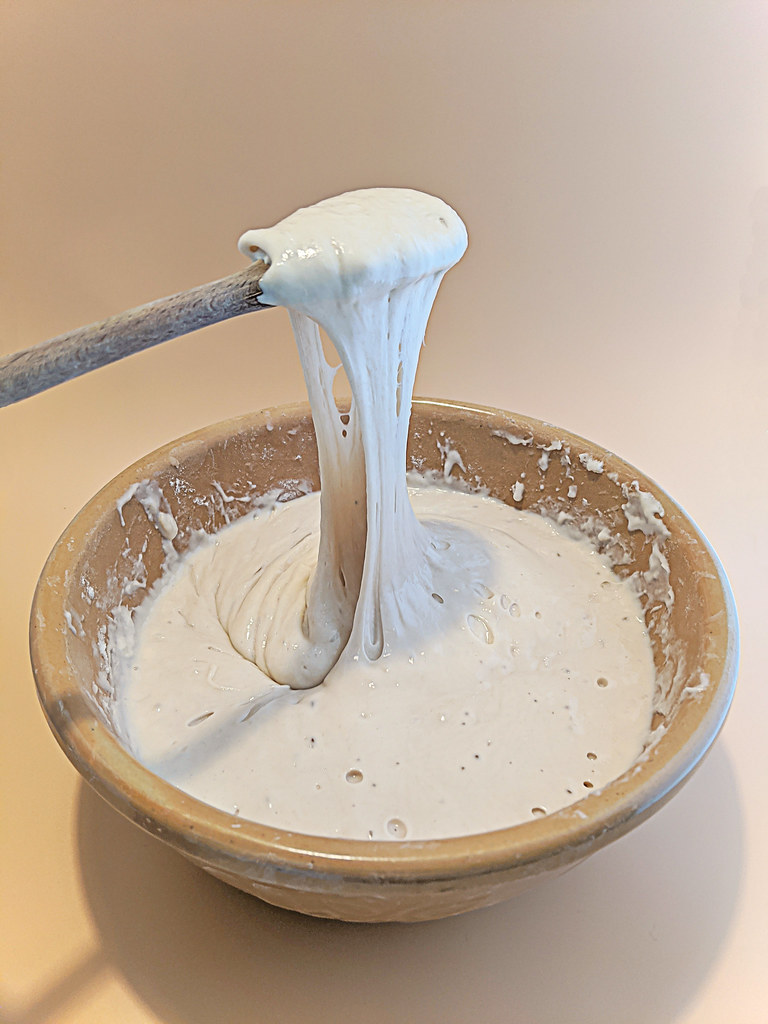 you’ve been neglecting. Packet yeast is more reliable and makes wine taste like you’d expect, whereas the use of native yeasts are less predictable and depend on what’s going on around the vine. A wild ferment means that you’re letting wine ferment nAtuRaLlY with the yeasts that are native to the vineyard. Packet yeast was captured in the wild once upon a time, and then simply frozen.
you’ve been neglecting. Packet yeast is more reliable and makes wine taste like you’d expect, whereas the use of native yeasts are less predictable and depend on what’s going on around the vine. A wild ferment means that you’re letting wine ferment nAtuRaLlY with the yeasts that are native to the vineyard. Packet yeast was captured in the wild once upon a time, and then simply frozen.O
Oak Oak is the wood that some wines are fermented/aged in. Oak gives texture and colour to wines as well as give what we call roasty-toasty flavours of vanilla, cannelés
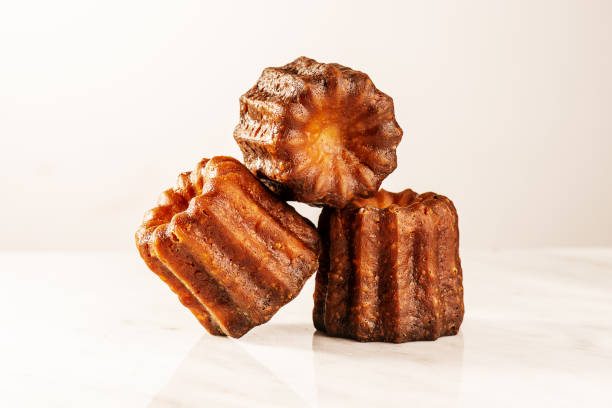 , sweet baking spice, hazelnuts and coconuts. New oak has more of these flavours, and old oak has less. Smaller barrels also give more of those flavours because of surface area and on a budget, oak staves or oak chips can be used.
, sweet baking spice, hazelnuts and coconuts. New oak has more of these flavours, and old oak has less. Smaller barrels also give more of those flavours because of surface area and on a budget, oak staves or oak chips can be used.Old World, New World, Ancient World The ‘Old World’ is the set of countries where wines have been made for a super long period of time. Think France, Italy, Spain, Germany etc. ‘New World’ is basically anywhere that isn’t Europe. Classic coloniser shit. But yeah, countries that haven’t been making wine for as long. That includes Australia, New Zealand, the States, Chile, South Africa etc. The UK is in Europe but we think people would vouch for them to be considered a New World country because it’s only really thanks to recent days of global warming that they’re able to have climates warm enough to grow grapevines in. Wines that have been made in a ‘New World’ in style tend to be bigger, more fruit forward and have a higher ABV. This dichotomy is used as a simplification about general styles (obvs Australian wines can be delicate and light). The ‘Ancient World’ is a rogue one because they’re the ones who have been doing it for even longer. Looking at you, Georgia, Slovenia etc.
Orange, Amber & Skin Contact Skin contact wines are white grapes which have been left on their skins to impart colour, flavour and texture. All orange wines are skin contact wines, but not all skin contact wines are orange. Saying that you “really like orange wines” means just about the same thing as “I really like white wines”. It’s super broad. A lot of people don’t feel like they’re getting an orange wine when the wine’s colour isn’t the colour of a Stabilo orange highlighter
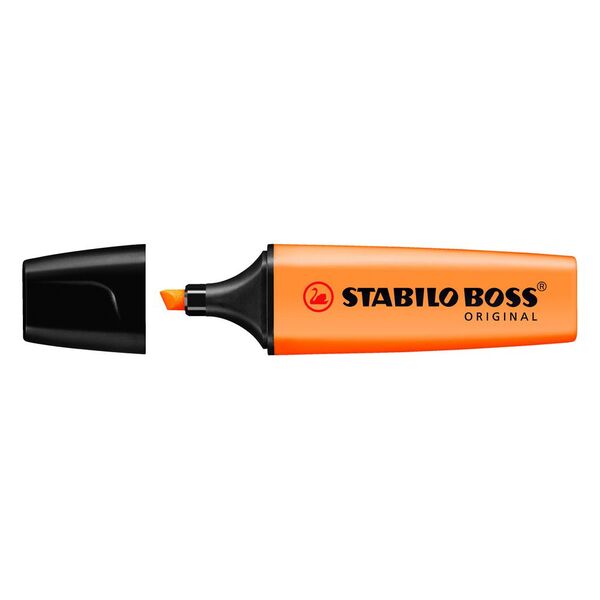 . The reality is that not all grape varieties have deeply hued skins that can develop that colour or haven’t been left on their skins for as long. Too much skin contact can be a bit icky and make wines taste oily and flabby. Liking skin contact wines that are ‘super orange’ in colour is likely to speak more about the grape varieties that you like. In Australia, you’re looking at sauvignon blanc, moscato, riesling, pinot gris, verdelho. NB: All red wines are skin contact wines. It’s where the colour comes from since all grape juice starts off clear. We like to think orange wines are white wines made like red wines, and roses are red wines made like white wines.
. The reality is that not all grape varieties have deeply hued skins that can develop that colour or haven’t been left on their skins for as long. Too much skin contact can be a bit icky and make wines taste oily and flabby. Liking skin contact wines that are ‘super orange’ in colour is likely to speak more about the grape varieties that you like. In Australia, you’re looking at sauvignon blanc, moscato, riesling, pinot gris, verdelho. NB: All red wines are skin contact wines. It’s where the colour comes from since all grape juice starts off clear. We like to think orange wines are white wines made like red wines, and roses are red wines made like white wines. Oxidative Oxidatively handled wines are wines that have been deliberately exposed to oxygen
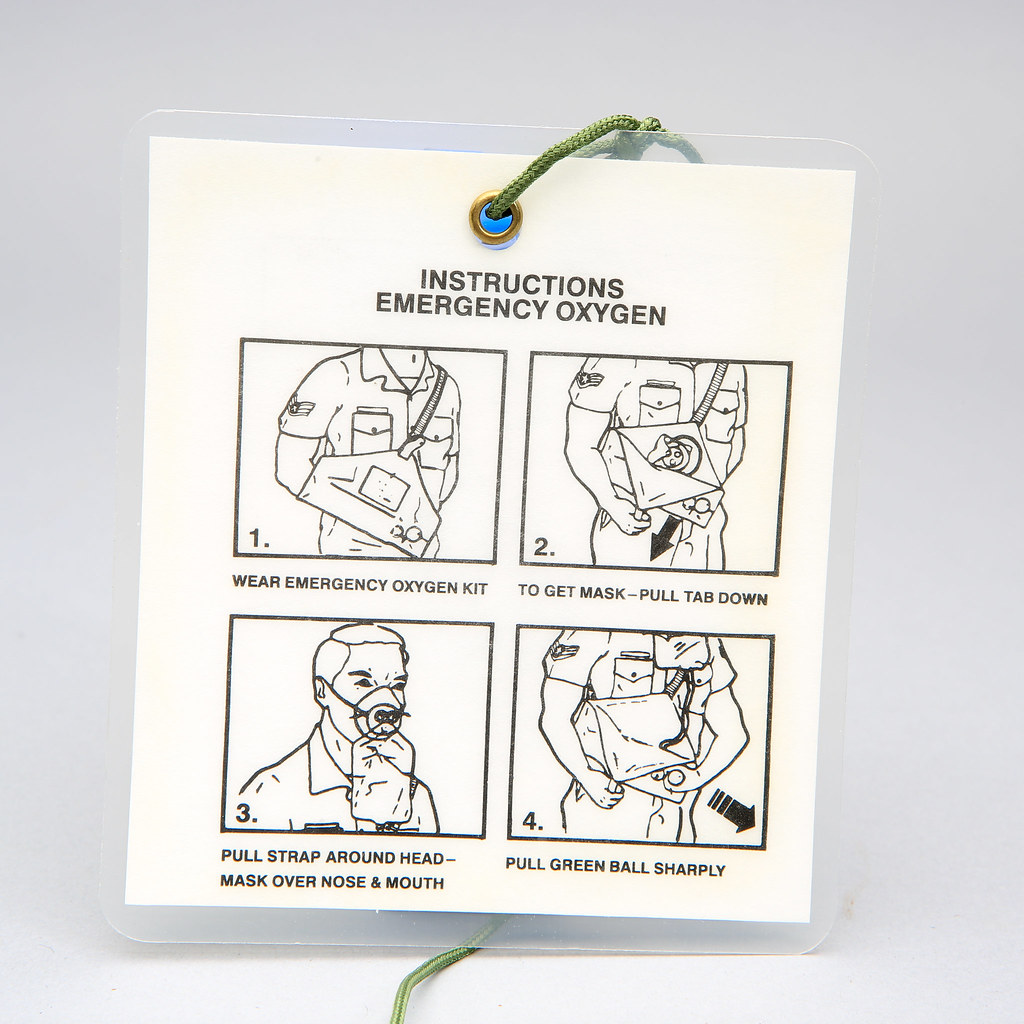 during the winemaking process. Basically as wine ferments, it evaporates and winemakers will ‘top’ barrels with more of the same wine to prevent it from being exposed to oxygen.
during the winemaking process. Basically as wine ferments, it evaporates and winemakers will ‘top’ barrels with more of the same wine to prevent it from being exposed to oxygen.Oxidation shows itself as a nutty, kerosene character in white wines and in red wines, more of that dried fruit, herbaceous character. It’s also what ages wine; corks and screw caps are designed for measured exposure to oxygen and affects colour, taste, aroma and structure. Here, oxygen binds with tannins and eventually forms long chains and drops out of the wine creating the sediment at the bottom of older red wines, and therefore creates the need to decant. In an uncontrolled environment, oxidation also turns wine into vinegar (i.e. that bottle of half drunk Tezona that lives above every sharehouse fridge).
R
Reductive Reduction is the opposite of oxidation where wine is not exposed to air. We could write a scientific essay on what reduction is. TLDR: don’t worry about it. Here’s how it affects what your wine smells and tastes like. Reduction is a sliding scale. It can produce some compounds that are mild and lend struck match, mushroom or green olive aromas to the glass but it can also head into super stinky territory, think boiled cabbage, rotten egg or burnt rubber. Wines that are reductive often need to ‘open up’ with air (see: tight). If you smell a horribly stinky wine, swirl in your glass, or a shake in the bottle, or decant. Here, oxygen is your friend.
S
Savoury Characteristics which aren’t fruit. Things like charcuterie, capsicum, olives, earth, herbaceousness.
Structure The aspects of a wine that doesn’t involve how it tastes. The interplay of acid, tannins, alcohol, texture, weight and so on.
T
Tannins You know when you’ve left your teabag in for too long and your tongue feels fuzzy and dry after you take a sip? That’s caused by tannins and they’re in grape skins and seeds too. A ‘slurpy’ wine will have lower tannins whereas a ‘structured’ wine will have more.
Textural A textural wine is one that doesn’t drink like water and isn’t necessarily smooth. It takes on a different shape in your mouth and this is its main selling point. It’s caused by skin contact, lees or barrel influence.
Tight This one was hard so here’s a more esoteric attempt to define; purse your lips and inhale quickly. That sound that you hear is what it feels like on the palate. For us, tightness works in wine in one of two ways. Sometimes, like in a Clare Valley Riesling, tightness compliments a wine’s acid, zippiness and lean structure. In another interpretation, it’s when a wine hasn’t ‘opened up’ yet. Say for instance when you’re cracking a big Côtes du Rhône and it needs a bit of air to get all the fruit to show itself. It can also refer to reduction but it’s the ‘closed’ nature of a wine.
V
V.A. Volatile acidity, or as the cool kids call it, ‘V.A.’ is volatility in wine which is what begins the process of the wine turning to vinegar. In small amounts it can give a kombucha-edge to wines and gives them a brightness and perfumed lift with notes of tart raspberries and sour cherries. At high levels however, it’ll leave your wine tasting of home brand apple cider vinegar
 and smelling of nail polish.
and smelling of nail polish. Vintage The vintage of the wine is the year written on the bottle. It means that all the grapes were picked in the summer of that year. No matter what year you’ve bought the wine, or how long it may have been sitting in a barrel before it was bottled, the year will always be the year that grapes were harvested. Conversely, ‘NV’, as in non-vintage, means that grapes came from a mix of more than one year. Every year, summer looks different (*gestures broadly at everything*) and if it’s hotter, or wetter, or whatever, grapes are going to taste different and therefore, the wine is going to taste different. What could have been your favourite wine last year could fall flat the next because it was a challenging vintage. Vintage/harvest is also what doing seasonal work in a winery is called.
W
Weight The weight of a wine in your mouth. Weight works in a light to heavy spectrum. Think of the relative feeling of water, almond milk and full cream milk in your mouth.
Whole Bunch WB fermentation is a much less radical version of cab mac.It involves using 1-100% of whole bunches mixed with crushed grapes
 at the start of the fermentation stage. The creation of an oxygen free environment kicks off some intracellular fermentation. It doesn’t result in as fruity characters as cab mac but it does give wines more aroma, more texture and has been said to give wines good ageing potential. Since you’re using the stems in whole bunch, you get stemmy, sometimes green, characters in a wine.
at the start of the fermentation stage. The creation of an oxygen free environment kicks off some intracellular fermentation. It doesn’t result in as fruity characters as cab mac but it does give wines more aroma, more texture and has been said to give wines good ageing potential. Since you’re using the stems in whole bunch, you get stemmy, sometimes green, characters in a wine.